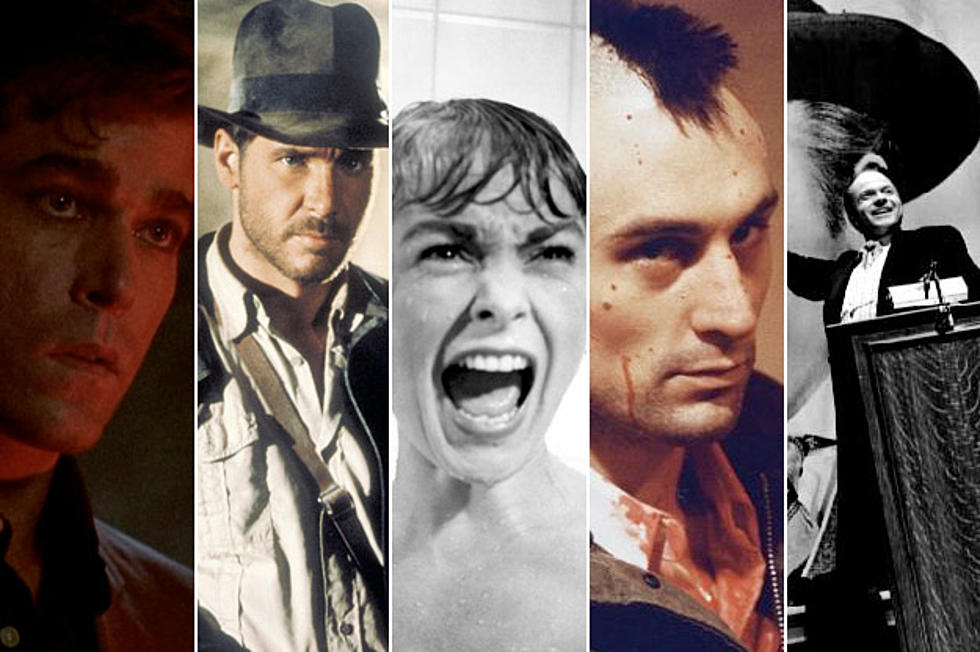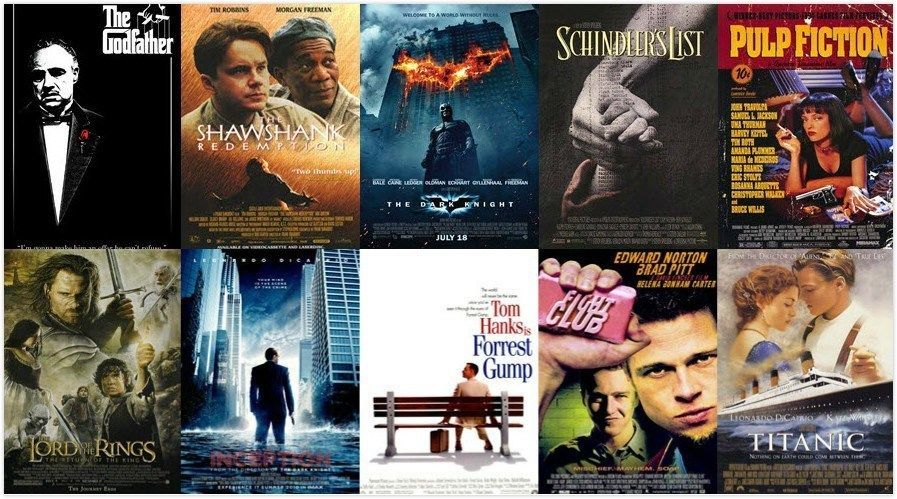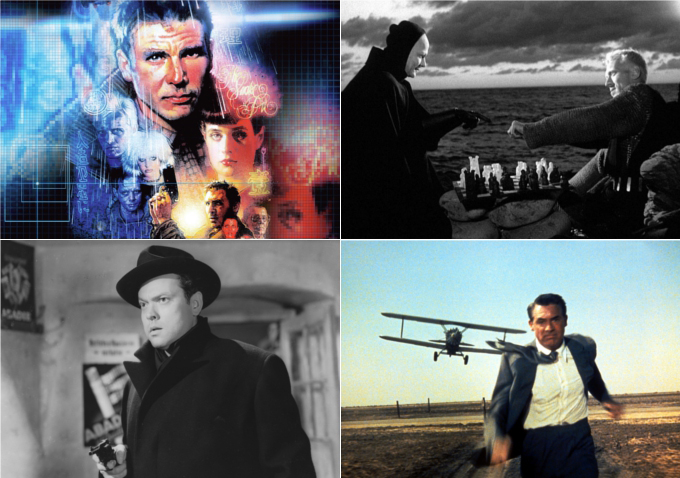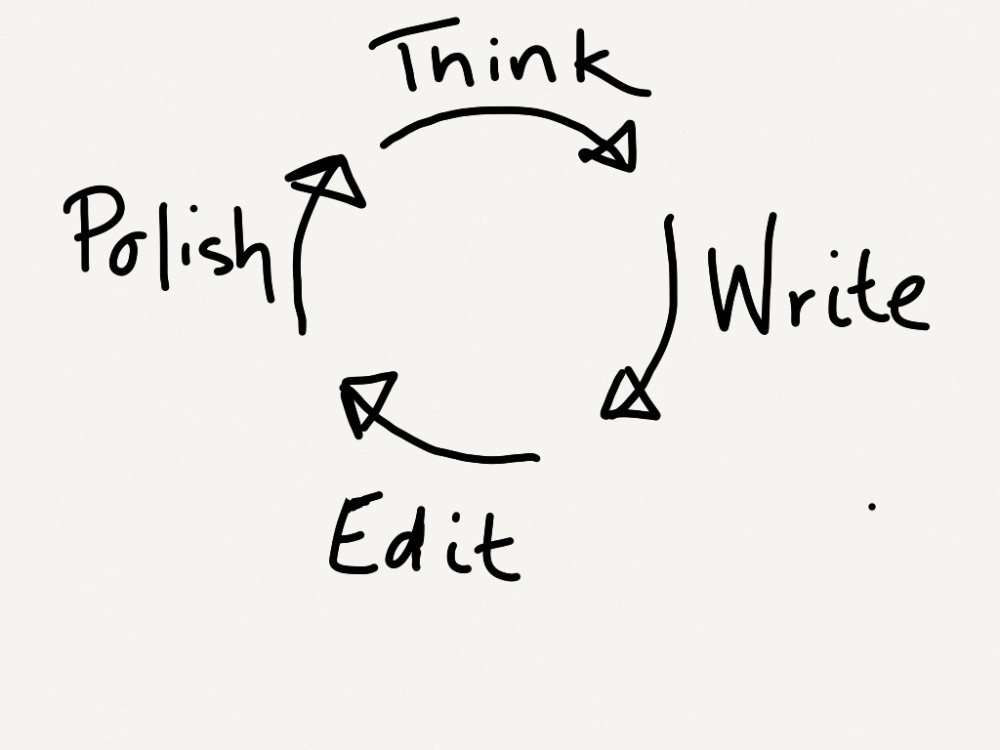
**An alternate source for this material is available upon request. (subject to change)
You may select any filmmaker, film genre, film topic, film character or film franchise and explore for relevance, meaning and historical significance.
Semester Project options: You may choose to write a research paper, create a website, record a docu-podcast, or video documentary for your final project. No matter your method, you should use the following general guidelines for “content” coverage information.
- Examine three films for your project.
- You should utilize four-six sources (outside of your films).
- If you choose a creative alternative (Doc-podcast, or video essay) you will still need to engage in (and apply) the research and submit a support document that includes: Title Page, Abstract and APA-formatted sources.
- Other Guidelines and expectations are listed below.
Make sure that you explore the following within your evaluation/research project:
Your external sources and research should help provide support general info. More details about deeper research ideas in the next section:
- Awards presented to this film
- Background on the cast & crew
- Audience & general critical reaction
- Examine the hero’s journey and identify which hero (type) is best represented by the lead character(s). *This should also tie in to the understanding of character & story arc and development.
- Which Blake Snyder formula best represents the film? Why? Explain and dissect in detail.
- Which Universal theme (or life lesson) is best represented in this film?
- Evaluate the following in detail:
- The script/the narrative/the story
- What is the genre of the film (drama, action, comedy, sci-fi, biopic, etc.)? Explain why you feel this way.
- Examine the acting.
- Did the character(s) experience real change? If so, explain how?
- Explore the conflicts and their impact on the character.
- Examine and evaluate the technical aspects in detail:
- Cinematography/color theory/lighting
- Sound design & Musical score
- Production/set design
- Special visual effects (if used)

- What was your overall impression of the film after the detailed evaluation? Why? What were the overall strengths and weaknesses? What grade or report card score would you give this film?
- Who is the intended audience for this film? Explain.
- What was the director hoping to achieve with this film? Defend your answer.
- Do you feel that the critical classification of this being one of the “best-ever” films is warranted (personally)? Defend your answer.
- Does the film hold up to our current society (and/or cultural landscape)? Do the themes, messages, characters or storylines still hold relevance? Why or why not? Offer your defense.
Research Expectations (and ideas)
- Your final paper should be based on six (6) strong sources outside of the films you view (print, online articles, audio, and video sources are acceptable). Do not use Wikipedia. You may use IMBD as a general background source, but you should still add six more sources. *You will be able to get ahead on this research during the Annotated Bibliography project.
- Each paper will be different based on the research items you’ve gathered, but the following info would be beneficial for your final draft. This could be included in the standalone research section or the combo research/evaluation component. As long as you reference where the original source of reference came from, I don’t have a preference on where you place (some or all of) the following. The following list is for idea generation, and will make your project a much stronger one. I hope this helps:
- Was this film written original to the screen or adapted from another source material? If adapted, spend time sharing info about the original source material (and writer/screenwriter) and the success of the original. Do the same if this is original to screen.
- Cultural Impact of films or filmmaker.
- Cinematic Impact of films or filmmaker.
- Historical Impact of films or filmmaker.
- Message and meaning of films or filmmaker.
- What do other filmmakers, audiences or critics have to say about the films or filmmaker?
- Box Office results & general critical response (positive/negative).
- Any important background on the film cast/crew (was this a launching pad for them, was this film at the end of his/her career, what recognitions did they receive for the film, etc.).
- Awards for the film (IMBD is solid for this).
- Any significant background on the “making of this film?”
- If you have interviews with the original filmmakers (which I recommend) – what are some of their thoughts about the film and the impact it has had?
- Did this film launch a franchise (if so how many and did they find success)?
- Why is this film considered one of the best of all time (this should be a combo of research and personal critical evaluation)?
- Any other research items you feel are relevant.

Format and writing expectations (for written papers):
- The paper should be written in APA style throughout your work including in-text citations. There are numerous APA citation generators available online to assist you if needed. You will find detailed support through the Tutoring Center & the Dover Library.
- You will also need a bibliography/references page at the end of your paper (APA ) identifying your sources (including the film you view).
- 12 pt font (Georgia, Times, or Palatino).
- Header at the top of your paper (on each page) should include the name of your project, your selected film-study and your name.
- Number the pages in the upper right hand corner of each page.
- Category headings or subheadings as needed throughout the paper.
- Line spacing should be 1.5 or 2.0
- The final draft should be submitted in a document file (word, google doc, pdf) and submitted by the deadline via email (NO LATE PAPERS ACCEPTED). You may additionally choose to load this onto your film blog (WordPress), but that is not the way I want it submitted for grading.

Formatting expectations and Outline Guide
*This is how your final paper should be structured:
- Title Page (Adapted APA Format) – Name of paper/project, Name of student, Name of College, Name of Class, Name of Instructor, Semester and Year.
- Abstract (details in link) – In 150-300 words, the Abstract will provide a general summary of the paper including: your topic, purpose of the paper, the research methods & critical evaluation methods you engaged (how did you research and develop your conclusions of study?), your general overview (of your research and critical evaluation), and a short summary of the findings, interpretations and conclusions you found. Remember, this is where you hit the highlights of the paper; your next several pages will offer all the elements in detail (use APA style for subheading).
- Introduction and Thesis Statement – The introduction should be one-three paragraphs and should be a set up (or launching pad) for where the paper will take you. Tell the audience what you’re going to be telling them. This is where you catch the attention of the reader and offer a tease for what is to come (use APA style for subheading).

- Research & Findings Section -This is where you pull together and share your key research findings that are appropriate and relevant on your topic. This is not the personal evaluation component; that comes next (use APA style for subheading).
- Critical Review and Evaluation Section – This is where you will critically explore and analyze everything from Blake Snyder’s story formula, to the Hero’s Journey, to the universal theme, to color theory, character conflicts, and sound design. All areas for you to investigate are listed on the semester project page. The materials that you will examine have been covered within this course previously; you’re ready for this (use APA style for subheading).
***Note: More than likely, there may be components of your research that will show up in the Critical Review and Evaluation Section. That is perfectly OK and expected, just make sure that you use in-text citations to note original thoughts vs. researched thought. But mostly, this section should reflect your personal critical exploration.
*** Note 2: Some of you may find it flows better in your writing style to combine your Research & Findings and Critical Review and Evaluation completely into one section. I’m fine with that as long as there is a clear distinction between original thoughts and researched findings.
- Conclusion – These are the combined summary thoughts that you’ve found from research and the critical analysis. This is also your chance to make a final statement in regards to the film’s merit and impact on society, history and the cinematic experience. If you haven’t already proven why this film is considered one of the best of all time, now is your opportunity for a closing statement to make the case.

- References in APA format (*Note -this is not the annotated bibliography, these are your references noted in appropriate APA format).
*Notes -check APA expectations for running head, name placement, page numbering, and in-text citations.
APA General Formatting Guidelines

Timeline to assist you in staying on track
Module 2 – Jan. 20-26: Begin brainstorming ides/topic focus.
Module 3 – Jan. 27-Feb. 2: Lock in project and Identify (3) three films for review featuring your semester project study.
Module 4 – Feb. 3 – 9: Identify 4 – 6 (four-six) strong sources for your semester project (print, online articles, audio, video sources are acceptable). Do not use Wikipedia. If you use IMBD, you should still add 4-6 more sources. These sources should be posted on a separate discussion board post.
Module 5 – Feb. 10 -16: By this module you should have screened and made notes on one-two of your project films.
Module 6 – Feb. 17 – 23: Should have viewed two-three of your semester project films. Identify 4 – 6 (four-six) strong research sources for your semester project film (print, online articles, audio, and video sources are acceptable). Do not use Wikipedia. If you need guidance, ask me well before this date. The Dover Library has a variety of research options available.
Module 7 – Feb. 24 – March 2: Should begin working on incorporating notes and research into a draft. All three film should have been viewed.
Module 8 – March 3-9: Begin fine tuning first draft.
Module 9 – March 10-16: Edit, edit, edit project and make sure your project is focused.
Module 10 – March 17-23: First draft of project should be complete. You may submit to me for feedback.
Module 11 – March 24-30: The second draft of your semester project should be ready. You may submit to me for feedback.
Module 12 – March 31 -April 6: Work towards final draft.
Module 13 – April 7-13: Finish final draft
April 18: Final project due (no late work accepted)
(no late work accepted) – (follow posted guidelines)
****
Additional Reading Sources
Carfagno, V. R., Higgins, M., & Rafael, C. M. (1972). Character Analysis. Retrieved from http://www.wilhelmreichtrust.org/character_analysis.pdf
Davis, D. R. (2008, February 28). How to write a character analysis. Retrieved June 29, 2016, from Teaching college English: The glory and the challenges, http://www.teachingcollegeenglish.com/2008/02/28/how-to-write-a-character-analysis-and-a-personnel-review/
Harcourt, H. M. What are the differences between an epic hero and a Romantic hero? Retrieved June 29, 2016, from Cliffnotes, https://www.cliffsnotes.com/cliffsnotes/subjects/literature/what-are-the-differences-between-an-epic-hero-and-a-romantic-hero
Hemingways code hero powerpoint presentation. (2002, November). Retrieved June 28, 2016, from http://www.xpowerpoint.com/Hemingways-Code-Hero–PPT.html
How to write a character analysis in 10 easy steps – eNotes.com. (n.d.). Retrieved June 28, 2016, from http://www.enotes.com/topics/how-write-character-analysis
Lopez, E. (n.d.). Responding to literature: Understanding character analysis | Scholastic.com. Retrieved June 28, 2016, from http://www.scholastic.com/teachers/lesson-plan/responding-literature-understanding-character-analysis
Morris, A. (n.d.). Character analysis in literature: Definition & examples – video & lesson transcript | Study.com. Retrieved June 28, 2016, from http://study.com/academy/lesson/character-analysis-in-literature-definition-examples-quiz.html
Purdue owl: Writing a literary analysis presentation. (n.d.). Retrieved from https://owl.english.purdue.edu/owl/resource/697/01/
Ray, R. (n.d.). What is an epic hero? | Characteristics of an epic hero. Retrieved June 28, 2016, from http://www.storyboardthat.com/articles/education/english/epic-hero
One Comment Add yours